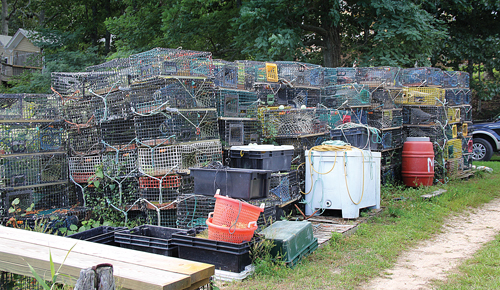Is Millstone power plant killing lobsters in the Sound?

“It’s important to recognize that climate change is real and it is happening,” Mr. Gobler said. “We don’t know a lot about how it is going to affect the Sound, things like migration patterns can change, and shellfish do poorly because they filter at lower rates, for example. Given that as fact, we can consider, what if things are being made worse by some additional means?”
Mr. Schneiderman said the plant “may or may not have been a major contributor, but either way, they should not be given the right to dump heat into the Long Island Sound when newer technology is available.”
The Millstone plant generates about 21,000 megawatts of electricity daily, providing about half the power used by the state of Connecticut and 10 percent of the electricity used in the New England area, Mr. Holt said. To better understand the plant’s impact on the environment, he said, the company employs seven full-time scientists to continually monitor area waters.
“They look at the environment, the wildlife, the plant life, and studies are being done every day,” he said, noting that the scope of the company’s research is focused on waters immediately surrounding Millstone, about 1.5 to 2 miles out into the Sound.
Despite the in-house monitoring and studies, the Connecticut Department of Energy and Environmental Protection is also questioning the effects of heated water released into the Sound — and specifically, whether oxygen levels in the area closest to discharge pipes from the two operating reactors are sufficient to support aquatic life, according to The Day of New London newspaper.
“We see a need for Millstone to collect more robust data on the near-shore effects in its zone of influence,” Oswald Inglese Jr., director of the water permit and enforcement division at the Department of Energy and Environmental Protection told the New London newspaper in late September.
Mr. Holt said researchers made good on the department’s request at the end of September and compiled data from an infrared study of nearby waters to measure temperature changes over the course of tidal and current changes. Researchers are now working on compiling that study’s findings, he said.
Mr. Schneiderman said that while he had long been concerned about radiological and other toxic effects of the plant, “this thermal problem is a whole separate issue that I never before considered.”
“There has been a lot of discussion about nitrogen from septic systems impacting the water quality,” he said. “That’s true, but heat is a major issue as well. Even if we lower our nitrogen discharges, we will still lose our eelgrass, our scallops, our winter flounder, our striped bass, our lobsters. The full effects of rapidly rising water temperatures on the ecology of these water bodies is unknown, but no doubt catastrophic.”
If the study’s cost is affordable, Mr. Schneiderman said he hopes to secure funding from the county’s Drinking Water Protection Program.
He would hope to have the study done by March 2015.
[email protected] Follow @carriemiller01







